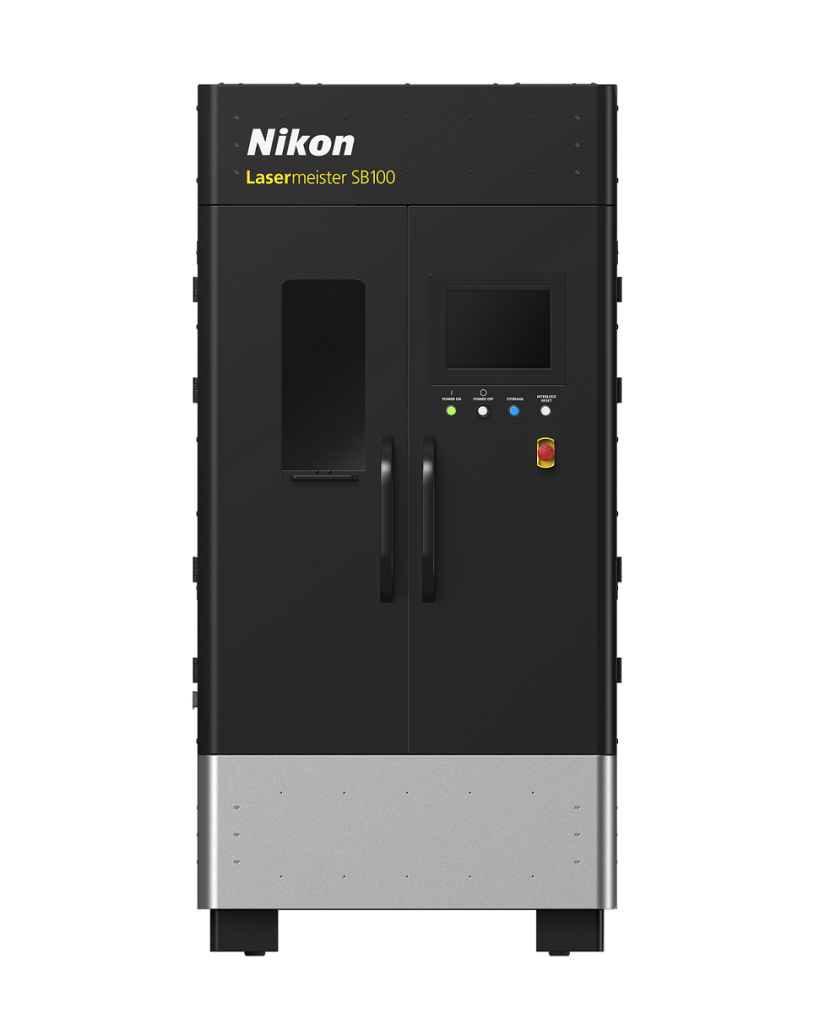Japanese multinational Nikon has unveiled its new Lasermeister LM300A DED 3D printer and Lasermeister SB100 3D scanner.
Targeted towards industrial manufacturing applications, the new 3D printer offers the ability to repair metal parts such as turbine blades to high levels of accuracy in conjunction with the SB100. The 3D scanner measures the component and automatically generates a tool path for the 3D printing-repair process.
Nikon claims that its new offerings can reduce lead times by up to 65% and minimize post-processing requirements.
The company, well known for its optics and imaging products, became a key player in additive manufacturing following its acquisition of SLM Solutions, a manufacturer of metal 3D printers. The deal, worth €600 million, saw the creation of Nikon SLM Solutions. This new company develops and commercializes large-scale metal additive manufacturing technology.
Sales for the Lasermeister LM300A and SB100 will begin in spring 2024.

Nikon launches new Lasermeister LM300A and SB100
Turbine blades are commonly found in aircraft engines and power generators. Due to exposure to high-temperature environments, these parts degrade over time and frequently need to be repaired.
Conventional repair methods include cutting and scraping off the warn-out areas, a laborious process which creates substantial material waste. Manual welding and grinding are then needed to complete the repair, which can pose challenges in achieving consistent results.
Nikon’s new Lasermeister LM300A DED 3D printer and SB100 3D scanner are designed to overcome these challenges by automating the workpiece repair process. With a maximum scanning size of Φ330 mm x H: 450 mm, the SB100 compares the shape of the damaged component to an ideal CAD model. Toolpath data is then generated for the repair process, which can then be sent to the LM300A. Here, DED 3D printing repairs the workpiece by melting metal wire feedstock directly onto the surface of the part with a laser.
Once the DED 3D printing process is complete, the component can then be placed back into the SB100 for part inspection, ensuring it has been repaired to the correct specifications. This automated process can reportedly reduce costs and lead times.
Away from turbine blades, Nikon also believes that its new metal 3D printing technology is well suited to repair applications within the automobile, railways, and machinery industries.

A DED 3D printer with broad material compatibility
Nikon’s new Lasermeister LM300A DED 3D printer leverages optical and precision control technology that the firm has developed through its suite of semiconductor lithography systems.
This is said to result in high-accuracy 3D printing results. For instance, when used with turbine blades, the LM300A can achieve an accuracy of +0mm to a maximum +0.5mm difference for the Z-axis. A melt pool feedback system is also used to control laser power, enabling high precision and crack-free surface finish.
With a maximum build volume of 297 mm x 210 mm x 400 mm, the DED 3D printer also offers wide-ranging material compatibility. In particular, the LM300A can be used with Nickel based alloys, Stainless Steel, High Speed Steel, and Titanium alloys.

Technical specifications of the Lasermeister LM300A
| 3D Printing Technology | Directed Energy Deposition (DED) |
| 3D Printer Dimensions | 1800 mm x 1350 mm x 1085 mm |
| Weight | 1350 kg |
| Rated Voltage | 200 to 230 VAC |
| Power Consumption | 3.6 kVA |
| Maximum Processing Range | 297 mm x 210 mm x 400 mm |
| Compatible Materials | Nickel Based Alloy (Ni625, Ni718) Stainless Steel (SUS316L) High Speed Steel (SKH51/M2/HS6-5-2) Titanium Alloy (Ti64/Ti-6AI-4V) |
| Powder Capacity | Up to 7 kg |
| Axes | XYZ 3-axis |
| Operating System | Windows 10 Embedded Enterprise Windows 10 Pro 64-bit Japanese |
| Display | 12.1 inch (Resolution: 1024 x 768) |
Technical specifications of the Lasermeister SB100
| Dimensions | 1040 mm x 1350 mm x 2085 mm |
| Weight | 730 kg |
| Maximum Scanning Size | Φ330 mm x H: 450 mm |
| Measurement Accuracy | ±40 μm |
| Generating Path Accuracy | ±25 μm |
| Rated Voltage | 200 to 230 VAC |
| Power Consumption | 2.2 kVA |
What does the future of 3D printing hold?
What near-term 3D printing trends have been highlighted by industry experts?
Subscribe to the 3D Printing Industry newsletter to keep up to date with the latest 3D printing news.
You can also follow us on Twitter, like our Facebook page, and subscribe to the 3D Printing Industry Youtube channel to access more exclusive content.
Featured image shows the Lasermeister SB100 3D scanner [L] and the Lasermeister LM300A DED 3D printer. Image via Nikon.


